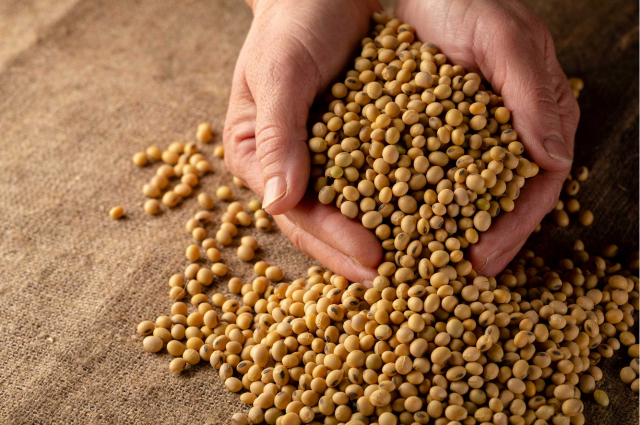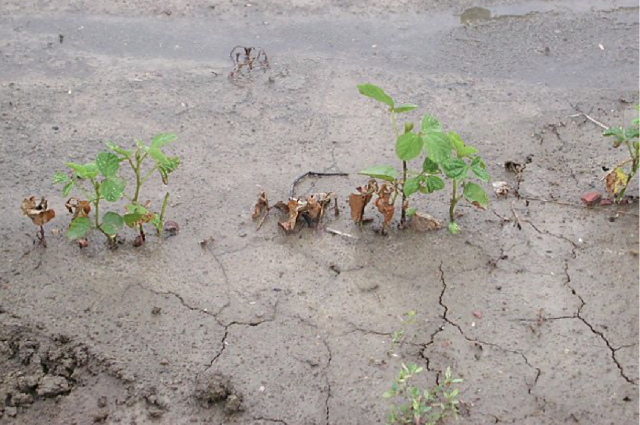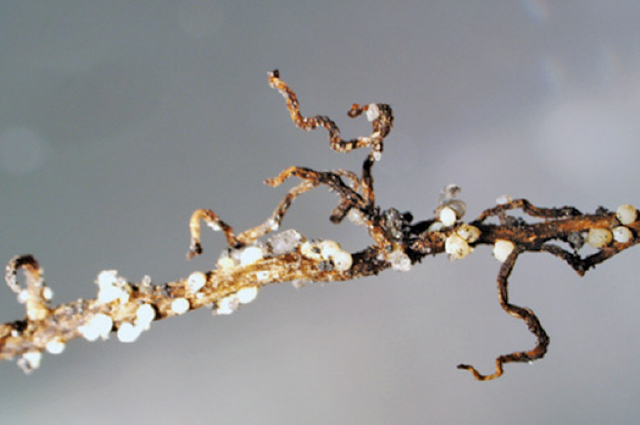Soybean Seed Size
Factors Contributing to Soybean Seed Size
Soybean seed size is determined partially by the variety (genetic tendency) but mostly by the growing conditions experienced at the production location. Several factors influence soybean seed size. We have generally observed that the Genuity RR2Y soybean varieties have tended to produce larger seed than the old Roundup Ready varieties. This would fit well with the common belief that larger seeded soybeans often yield more than smaller seeded varieties. Many of the surviving Roundup Ready varieties in our lineup today are larger seeded than the older varieties we have discontinued.
Stress or rainfall from the R6 growth stage and later greatly influences soybean seed size. Good growing conditions with adequate rainfall usually contribute to increased pod set (more pods). When times of increased pod set are followed by reduced rainfall (droughty conditions) during the R6 and later stages the result is smaller to more normal seed sizes. Increased pod abortion/decreased pod set will occur when soybeans are grown in areas of stress or drought throughout much of the season. This alone would produce both less seed and smaller seed.
However, the seed sizes can become quite large when rainfall occurs near the end of the grain fill period after the soybean plants have already decreased the total number of pods due to an earlier moisture stress. A pattern of late moisture after an earlier moisture stress often will brings the plants roaring back to life. Combine that, with a plant that still has normal photosynthetic capacity and decreased pod set, and the result is very large seed.
Does seed size effect yield potential?
Generally speaking, soybean seed size has no influence yield potential. Under extreme conditions soybean seed size can affect germination and emergence. Small seed tends to have better emergence than large seed under dry soil condition. Larger seed has larger cotyledons which require more energy to emerge from the soil. With larger seed comes a bigger energy reserve, therefore large seed may be able to survive adverse conditions longer prior to emergence than smaller seed.
Population rates and plant spacing are not as critical for soybeans as they are for corn due to the ability of the soybean plant to branch out and fill open space in the crop canopy. In other words, a few missing soybean plants here and there do not affect the crop yield potential. It is generally accepted that a uniform stand count of 100,000 plants per acre or more will not warrant replanting. The key word here is “uniform”. A spotty stand of 100,000 plants per acre most likely will require planting.
Planting populations need to be greater than 100,000 seeds per acre to account for percent germination, lost seedlings due to environmental factors and to insure a final stand that can reach top yield and profit potential. Consult with your Dyna-Gro representative, the Dyna- Gro product placement materials and local planting population recommendations to determine the proper planting rates for your situation.
References
- “Soybean Physiology: How Well Do You Know Soybeans?” Purdue University Extension. “Integrated Crop Management News”, Iowa State University. AgAnyTime. 2012.
- “Soybean Seed Size and Germination Management”, Published by Monsanto, Kansas State University. Pederson, Palle. 2008. “Soybean Seed Quality 2006”.
©Copyright 2013. This information may have been accumulated from publicly available sources outside of Dyna-Gro Seeds, or its affiliates. Individual results may vary, and performance may vary from location to location and from year to year. This result may not be an indicator of results you may obtain as local growing, soil and weather conditions may vary. Dyna-Gro® is a registered trademark of Loveland Products, Inc. Featured logos are service/trademarks of their respective owners.




